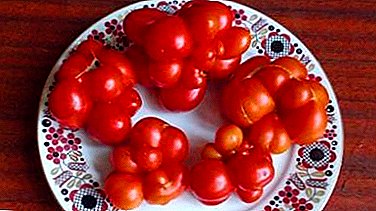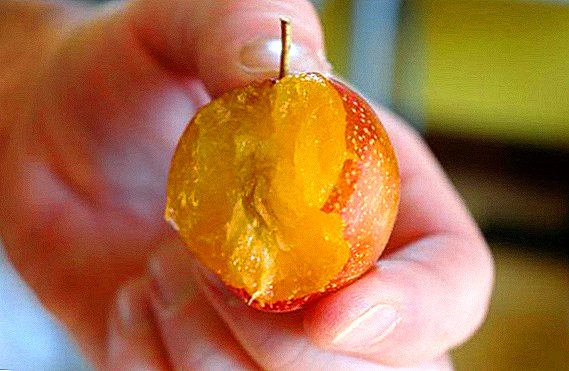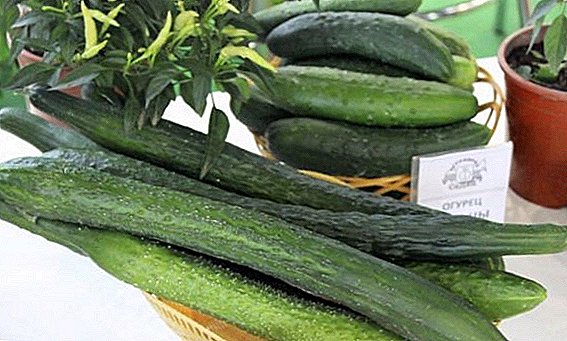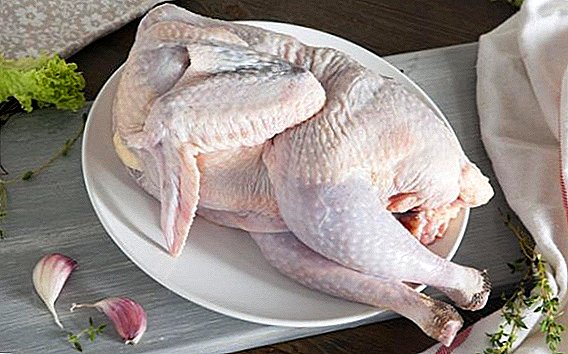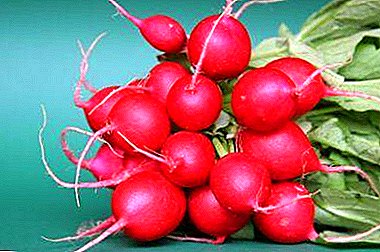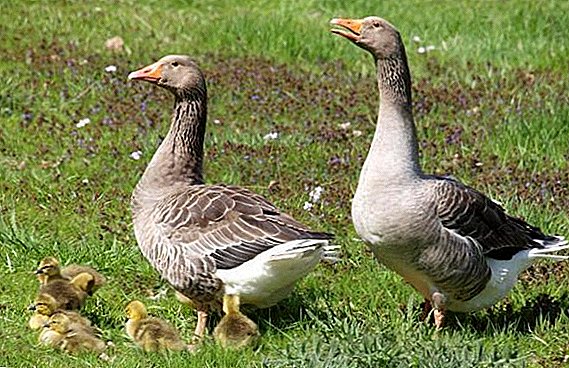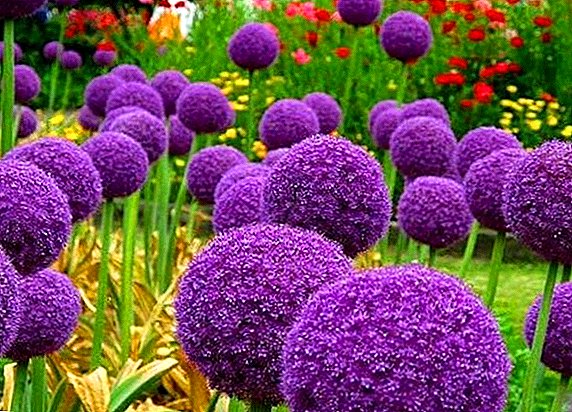 Hearing about onions, we unwittingly associate it with edible bulb or green. Although, in fact, in flowerbeds, it is also familiar and popular, as in our diet. Onion subfamily has more than 600 species, all of them are united by a sharp, sometimes even pungent smell and bitter taste. The decorative onion, allium, as this plant is also called, is very beautiful and long-blooming, which is why it has long been widely used in the design of flower beds, rock gardens, gardens and park areas. We offer to consider in detail the popular types of decorative onions with photos and names.
Hearing about onions, we unwittingly associate it with edible bulb or green. Although, in fact, in flowerbeds, it is also familiar and popular, as in our diet. Onion subfamily has more than 600 species, all of them are united by a sharp, sometimes even pungent smell and bitter taste. The decorative onion, allium, as this plant is also called, is very beautiful and long-blooming, which is why it has long been widely used in the design of flower beds, rock gardens, gardens and park areas. We offer to consider in detail the popular types of decorative onions with photos and names.
Neapolitan
Perennial herbaceous plant family Amarilisovye. Homeland of the plant is considered the Mediterranean. This is an elegant grassy shrub with lanceolate leaves and hemispherical white inflorescences 20-30 cm in height. A loose, fertile soil with neutral acidity is suitable for planting.
Allium perfectly combines with other plants that bloom in the same period, for example: peonies, poppy seeds, aquilegia, iris, lupine, delphinium, host, geyher.
 It is necessary to land in such a way that the planting depth is three times the height of the bulb. The interval between plants is 15-20 cm. It is recommended to plant in early autumn. BUT the bloom of this allium occurs in the June-July month.
It is necessary to land in such a way that the planting depth is three times the height of the bulb. The interval between plants is 15-20 cm. It is recommended to plant in early autumn. BUT the bloom of this allium occurs in the June-July month. Important! Before planting alliums, it is recommended to well fertilize the soil with complex mineral fertilizers and rotted compost.
Karatava
This species is characterized by massive gray-green leaves with red veins and large spherical inflorescences. Its height is not more than 30 cm. The bulbs are light, not more than 5 cm in diameter. This allium blooms a little more than 20 days, in late May-early June. The leaves retain their decorative effect even after drying of the peduncles, which must be removed. 
Kunta
Kunta is a perennial decorative onion, it belongs to stunted alliums, it reaches a length of 30 cm. It blooms all July. Propagated by seeds and bulbs. Leaves are semi-cylindrical, and a few flowers form umbrella inflorescences. 
Aflatunsky
Very cold-resistant representative of the species, winters quietly in the soil, even at -35 ° C. Completely unpretentious in the care. Suitable for planting in the sun and in partial shade. It blooms in June, and the seed pods ripen in July. Inflorescences globose, 7–10 cm in diameter. 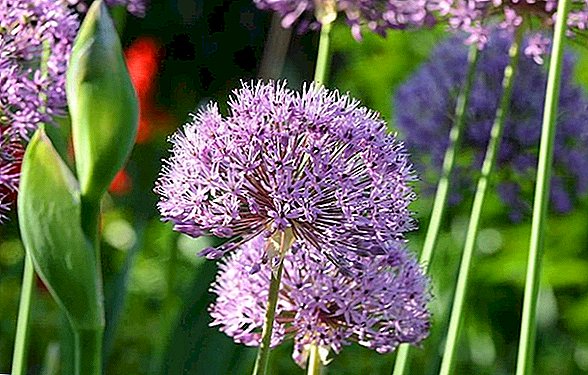
Praying
Stunted representative of alliums. Onion Mole is great for mass planting, the height of the stem is 20-25 cm, unusual flowers in the form of asterisks form spherical inflorescences of yellow color. Suitable for planting drained, moderately fertile soil. Allium leaves remain beautiful and juicy until the end of summer.
Suitable for planting drained, moderately fertile soil. Allium leaves remain beautiful and juicy until the end of summer. 
Blue
Blue Allium is a tall perennial (up to 80 cm) with triangular leaves and wide-bell-shaped flowers, which gather in hemispherical lush umbrellas of blue color. This decorative onion is grown from seed. Planted in open ground in late spring or early fall. Duration of flowering-20-25 days, begins in late May. The view is characterized by high winter hardiness and does not require special shelter for the winter.
Planted in open ground in late spring or early fall. Duration of flowering-20-25 days, begins in late May. The view is characterized by high winter hardiness and does not require special shelter for the winter.
Did you know? More than 130 varieties of onions are used for decorative purposes.

Single
Allium of the Lilleins family, got its name because of the accrete stamens, which constitute "one fraternity". The height of the stem reaches 60 cm, the leaves are slightly shorter, fistulous. The flowers form ovate inflorescences of purple or yellow. Duration of flowering 20-25 days. 
One-flowered
Small wild onions with one inflorescence on the arrow. In nature, it is most often found in the far east. Its young greens are eaten without heat treatment. Single-flowered allium is also called "wild garlic" because of the pronounced garlic flavor. 
Black (multibeam)
Perennial herbaceous plants from the family of Amarilis. In the wild, it is found in the Mediterranean. This exquisite representative of Allium with spherical inflorescences of white, which contradicts the name, flowers in the shape of stars, is very decorative. It is recommended to plant on loose fertile soil, in places where water does not stagnate. Perfect for planting in a sunbed. Blossoms in May and pleases with its beauty until the end of June. 
Important! When sowing onions must be carefully dried planting material. Poorly dried seeds can affect the appearance of a herbaceous plant, leaves and flowers will be faded.
Strange
The name of this species is associated with its unusual leaves, more precisely, most often the plant has one linear leaf, on which there is a pronounced convex central vein. The height of the stem is 25-30 cm. The umbrella consists of small white flowers, which are very similar to lilies of the valley. The bulb and green plants have a rich garlic aroma and can be eaten. 
Paniculate
Pretty rare representative of Allium. The height of the stem reaches 50-70 cm, the flowers of onion, paniculata, decorative-yellow-brown or pink, are collected in an oval umbrella. The vegetation period begins in April, and bloom falls in August. Seeds ripen in September. 
Ledebura
Very popular and beautiful view. The height of the plant is 60-80 cm, the brilliant purple flowers are gathered in a thick bunched spherical umbrella. The leaves are hollow, cylindrical. It blooms in late August and early September. Decorative onion varieties can be eaten. 
MacLean (exalted)
Allium is named after a man who in 1853 brought his bulbs from Afghanistan to Europe. This species belongs to tall, its stem reaches 1 m. The leaves are shiny, glossy, approximately 30 cm in size. The onion flowers are very decorative, snow-white at the beginning of flowering, and then gradually acquire a pinkish tint. Flowering is long, from April to the end of June.
Did you know? On the wild onions drew attention in ancient Egypt more than 4,000 years ago. It is believed that thanks to the decorativeness of allium, the Egyptians began to eat it and use it in medicine.
Okhotsk
Subspecies of onions victorious or wild garlic (wild garlic). The stem is quite high, 40-80 cm. The plant blooms four years after planting in open ground. If you plant it in a container, you can expect flowering in the first year. Known for its gastronomic qualities. Greens of this plant can be eaten either fresh or sour or pickled.  Onion care is that it is necessary to weed the soil from weeds, provide moderate watering during the drought period and periodically loosen the soil. The plant is completely unpretentious, and a variety of decorative varieties. definitely impressive. These herbaceous plants will certainly decorate any flower bed, and with a competent integrated planting, they will bloom variously throughout the summer, replacing each other.
Onion care is that it is necessary to weed the soil from weeds, provide moderate watering during the drought period and periodically loosen the soil. The plant is completely unpretentious, and a variety of decorative varieties. definitely impressive. These herbaceous plants will certainly decorate any flower bed, and with a competent integrated planting, they will bloom variously throughout the summer, replacing each other.


